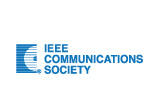IEEE ICC 2012 Tutorials Program
All Sessions (by time)
Monday, June 11, Morning
- T01 – Signal Waveform Design for Underwater Acoustic Communications
- T02 – Application Architectures for Machine to Machine Communications: State of the Art and Research Directions
- T03 – Recent Advances in Wireless Sensor Networks
Monday, June 11, Afternoon
- T04 – 60 GHz Wireless Communication
- T05 – Content Streaming for Mobile Environments
- T06 – Radio Resource Management in Femtocell Network
Friday, June 15, Morning
- T07 – Inter-Vehicular Communication: Standards, Protocol Design, and Integrated Security Metrics
- T08 – New Frontiers in Opportunistic Communication
- T09 – Remote Wellbeing Monitoring in 4G Networks
Friday, June 15, Afternoon
All Sessions (by time)
T01: Signal Waveform Design for Underwater Acoustic Communications Monday, June 11, Morning
- Speakers:
- Charalampos C. Tsimenidis, Newcastle University, UK
Bayan S. Sharif, Newcastle University, UK - Abstract:
- In recent years, there has been immense interest in developing underwater acoustic communication systems, most of which are related to remote control and telemetry applications. In practice, the only feasible method to achieve sub-sea communications is by means of acoustic signals. Such acoustic links are exposed to adverse physical phenomena governing acoustic wave propagation in the sea such as ambient noise, frequency-dependent attenuation, extended multi-path and Doppler spread. This tutorial will cover the design of signalling waveforms that are suitable for utilization in underwater acoustic (UA) modems. These will include PN sequences with low auto and cross-correlation properties, chirp design, in conjunction with pulse shaping and layered modulation schemes such as orthogonal frequency division multiple access (OFDM), direct sequence and multi-carrier code division multiple access (DS- and MC-CDMA). The tutorial will also address underwater channel modelling and simulation methodologies that are useful in evaluating "dry" performance of UA systems. Furthermore, the design of receiver algorithms will be considered that utilise adaptive receive arrays, carrier-phase and symbol timing recovery, Doppler compensation and multi-user detection methodologies. The tutorial is suitable for modem engineers with limited or no experience in this area to assist them in the design of UA based communication systems.
- Speaker Bios:
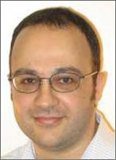
Charalampos Tsimenidis is a Senior Lecturer in Signal Processing for Communications in the School of Electrical, Electronic, and Computer Engineering. He received his MSc (with distinction) and PhD in Communications and Signal Processing from the Newcastle University in 1999 and 2002, respectively. His main research interests are in the area adaptive array receivers for wireless communications including demodulation algorithms and protocol design for underwater acoustic channels. During the last 12 years has published over 120 conference and journal papers, supervised successfully over 17 Ph.D. Students and made contributions in the area of receiver design to several European funded research projects including Long Range Telemetry in Ultra-Shallow Channels (LOTUS), Shallow Water Acoustic Network (SWAN), and Acoustic Communication Network for the Monitoring of the Underwater Environment in Coastal Areas (ACME). He is a member of the IEEE and IET.

Bayan Sharif is Professor of Digital Communications and Head of the School of Electrical, Electronic and Computer Engineering. He received the bachelor and doctorate degrees from Queen's University of Belfast and Ulster University, N. Ireland, in 1984 and 1988, respectively. He then held a Research Fellowship at Queen's University of Belfast before he was appointed as Lecturer at Newcastle University in 1990, and then as Senior Lecturer and Professor in Digital Communications in 1999 and 2000, respectively. Professor Sharif is head of the Communications, Sensors and Signal Processing (CSSP) research group and has personal research interests in digital communications with a focus on wireless receiver structures and optimisation of wireless networks. He has published over 300 journal and conference papers, presented several invited talks and tutorials and held UK and EU research grants in digital communications, underwater acoustics and signal processing worth over $6m. He is a Chartered Engineer, Fellow of the IET and Senior Member of the IEEE.
T02: Application Architectures for Machine to Machine Communications:
State of the Art and Research Directions
Monday, June 11, Morning
- Speakers:
- Roch H. Glitho, Concordia University, Canada
- Abstract:
- Machine to Machine communications (M2M for short), a key component of Internet of Things (IoT), aims at enabling interactions between devices (e.g. sensors/actuators, smart meters) with little or no human intervention. This tutorial in four parts proposes an overview of M2M with a focus on application architectures. In the first part, the standard system architectures proposed so far for M2M (e.g. ETSI M2M architecture, Wimax M2M architecture) are introduced along with the standard communications and networking technologies (IEEE 802.15.4, Zigbee, 6LoWPAN) on which they rely. The second part discusses concrete M2M application use cases, and gives insights in the application architecture related - challenges. The use cases are used to derive a comprehensive set of requirements for M2M application architectures. In the third part, the body of knowledge in application architectures is reviewed in light of the requirements. The review includes the middleware proposed so far (e.g. RESTful Web services based - middleware). It also includes the novel applications layer protocols being developed (e.g, IETF CoAP) for M2M. The strengths and weaknesses are assessed. In the fourth part we discuss novel research directions such as the use of cloud computing and 4G Evolved Packet Core (EPC) as M2M applications enablers.
- Speaker Bios:
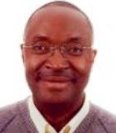
Roch H. Glitho [SM] (http://www.ece.concordia.ca/~glitho/) holds a Ph.D. (Tekn. Dr.) in tele-informatics (Royal Institute of Technology, Stockholm, Sweden) and M.Sc. degrees in business economics (University of Grenoble, France), pure mathematics (University Geneva, Switzerland), and computer science (University of Geneva). He is as an associate professor of networking and telecommunications at the Concordia Institute of Information Systems Engineering (CIISE), (Concordia University, Montreal) where he holds the Canada Research Chair in End-user Services Engineering. In the past he has worked in industry for almost a quarter of a century and has held several senior technical positions at LM Ericsson in Sweden and Canada (e.g. expert, principal engineer, senior specialist). His industrial experience includes research, international standards setting (e.g. contributions to ITU-T, ETSI, TMF, ANSI, TIA, and 3GPP), product management, project management, systems engineering and software/firmware design. He is a member of several editorial boards including IEEE Network and IEEE Communications Surveys and Tutorials. In the past he has served as IEEE Communications Society distinguished lecturer, Editor-In-Chief of IEEE Communications Magazine and Editor-In-Chief of IEEE Communications Surveys & Tutorials. His research areas include architectures for end-users applications, distributed systems, non conventional networking, cloud computing, and networking technologies for emerging economies.
T03: Recent Advances in Wireless Sensor Networks Monday, June 11, Morning
- Speakers:
- Dharma P. Agrawal, University of Cincinnati, USA
- Abstract:
- A large number of wireless sensor nodes (SNs) are used in a Wireless Sensor Network (WSN) and information from all SNs are collected at a Base Station (BS) or a sink. After introducing a SN, various characteristics of a WSN are covered in monitoring an unattended area. There is a need to learn about how regular WSN topologies can be effectively used for physically accessible areas. Results are presented on numerous advantages of using a regression polynomial. Impact of using powerful SNs on the system coverage and connectivity are also examined. Another scheme of minimizing packet traffic by collecting data using a mobile Base Station is also considered. Energy consumption throughout the area can be equalized by controlling data packet generation rate based on how far away the SNs are with respect to the BS. An innovative technique of distributing keys for shared secret key based communication in a WSN is described and various characteristics including resiliency are outlined. Monitoring of a battle-field using a WSN is also illustrated using boundary detection of a wild forest fire. Analytical model is introduced and are compared with simulation results. The need for layered sensing in secured communication is also investigated.
- Speaker Bios:
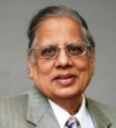
Dharma Agrawal is the Ohio Board of Regents Distinguished Professor in the School of Computing Sciences and Informatics. He has been a faculty member at the ECE Dept., Carnegie Mellon University (on sabbatical leave). His current research interests include resource allocation in wireless mesh networks, query processing and secured communication in sensor networks, environmental monitoring using sensor networks, and effective traffic handling in integrated wireless networks. His is a co-author of an introductory text book on Wireless and Mobile Computing, third edition and Ad hoc and Sensor Networks, 2nd edition. He was awarded a Third Millennium Medal by the IEEE for his outstanding contributions. He has given 38 different tutorials and extensive training courses in various conferences in USA, and numerous institutions in Taiwan, Korea, Jordan, UAE, Malaysia, and India in the areas of Ad hoc and Sensor Networks and Mesh Networks, including security issues. He has been named as an ISI Highly Cited Researcher, is a Fellow of the IEEE, the ACM, the AAAS and the World Innovation Foundation, and a recent recipient of 2008 IEEE CS Harry Goode Award. University of Cincinnati has been given him an award for 2011 year Excellence in Doctoral mentoring.
T04: 60 GHz Wireless Communication Monday, June 11, Afternoon
- Speakers:
- Theodore S. Rappaport, New York University, USA
Robert W. Heath Jr., The University of Texas at Austin, USA
Robert C. Daniels, Kuma Signals, LLC, USA - Abstract:
- The millimeter-wave band, especially spectrum in the LMDS (28-38 GHz) and unlicensed 60 GHz bands, is at the spectral frontier of high bandwidth commercial wireless communication systems. Spectrum at 60 GHz is plentiful (up to 7 GHz unlicensed spectrum is available in many countries). Several emerging wireless standards will exploit 60 GHz to provide high data rate media streaming and rapid data transfer. Designing 60 GHz wireless systems offers different challenges than millimeter wave communication systems due to differences in the channel, circuits, antennas, algorithms, and protocols. This tutorial will provide a comprehensive introduction to 60 GHz wireless communication systems. It will discuss the entire system including propagation, RF/Analog circuits, the physical layer, and the link layer. It will discuss 60 GHz in several commercial standards including IEEE 802.15.3c and IEEE 802.11ad.
- Speaker Bios:
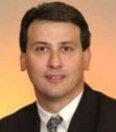
Theodore S. Rappaport received his B.S., M.S. and Ph.D. degrees from Purdue University. He is the David Lee/Ernst Weber Chair of Electrical Engineering at New York University (NYU) and also serves on the faculty of NYU’s Courant Institute and the Medical School. He founded two renowned academic wireless research centers – Virginia Tech’s wireless communications program in 1990, and the Wireless Networking and Communications Group (WNCG) at The University of Texas in 2002. Prof. Rappaport is a pioneering researcher in the fields of radio wave propagation, wireless communication system design, and broadband wireless communications circuits and systems at millimeter wave frequencies. He has received many awards including the Frederick Emmons Terman Award from the ASEE, the Stuart F. Meyer Award from the IEEE Vehicular Technology Society, the Sir Monty Finniston Medal from the IET, and the IEEE Communications Society Stephen O. Rice Prize Paper Award. He has also founded and sold two companies to publicly traded firms, testified before the US Congress, served as an international consultant for the ITU, consulted for over 30 major telecommunications firms, and continues to work on many national committees pertaining to communications research and technology policy. He has served or is serving on the Board of Governors of IEEE COMSOC and IEEE VTS, is an IEEE Fellow, and is a registered Professional Engineer in Texas and Virginia.

Robert W. Heath Jr. received the B.S. and M.S. degrees from the University of Virginia, Charlottesville, VA, in 1996 and 1997 respectively, and the Ph.D. from Stanford University, Stanford, CA, in 2002, all in electrical engineering. He is currently an Associate Professor at The University of Texas at Austin. Dr. Heath has been an Editor for the IEEE Transactions on Communication and an Associate Editor for the IEEE Transactions on Vehicular Technology. He is the Chair of the IEEE COMSOC Communication Theory Technical Committee in COMSOC. He has held leadership roles in several IEEE conferences and workshops. He is the recipient of the EURASIP Journal on Wireless Communications and Network best paper award. He has given tutorials in the past at VTC, ICC, and ICASSP. Prof. Heath is the recipient of the David and Doris Lybarger Endowed Faculty Fellowship in Engineering, is a registered Professional Engineer in Texas, and is an IEEE Fellow.

Robert C. Daniels received B.S. degrees in Mathematics and Electrical Engineering from The Pennsylvania State University in 2004. He received the M.S.E. degree and the Ph.D. degree in Electrical and Computer Engineering from the University of Texas at Austin in 2006 and 2011, respectively. During his time at UT Austin we was awarded multiple fellowships and won multiple awards, including the WNCG student leadership award (2009) and the ACM Mobicom WINTECH best wireless demo award (2009). He is a co-founder and Executive Vice President of Engineering of Kuma Signals, LLC in Austin, TX where he serves as Principal Investigator on Department of Defense contracts and also manages the C3Z project, which will provide 60 GHz wireless links specifically tailored to defense and medical applications.
T05: Content Streaming for Mobile Environments Monday, June 11, Afternoon
- Speakers:
- Mahbub Hassan, University of New South Wales, Australia
Salil Kanhere, University of New South Wales, Australia - Abstract:
- With the proliferation of smart mobile devices, a growing number of users are now accessing streaming applications while travelling in cars, buses and trains. Market forecasts suggest that by year 2015, more than 50% of the total mobile traffic will come from streaming applications. Unfortunately, under high-speed mobility and growing network heterogeneity, mobile devices are facing increased uncertainty as well as more frequent and more substantial fluctuations in available network resources. Not only it has become more difficult to predict network bandwidth, but simply adapting multimedia quality to the predicted bandwidth is also no longer adequate as frequent and drastic quality variations reduce user quality of experience. Optimization of streaming quality in mobile environments therefore has become a challenging problem, which is receiving renewed attention from both academic and industrial research. This tutorial will provide a comprehensive overview of the latest research in the broad area of mobile streaming. Topics that will be covered include, but not limited to, characterization of bandwidth variability under high-speed mobility, use of location-based bandwidth prediction in multimedia content adaptation, introduction to HTTP-based streaming, and overview of emerging standards for mobile streaming. The tutorial will conclude with open issues and future directions of research.
- Speaker Bios:

Mahbub Hassan is a Full Professor in the School of Computer Science and Engineering, the University of New South Wales, Sydney, Australia. He worked as Visiting Professor at Osaka University, Japan (2011), University of Nantes, France (2005) and National ICT Australia (2004). He is an Area Editor of Computer Communication journal (Elsevier) and has previously served as Guest Editor for IEEE Network and Associate Technical Editor for IEEE Communications Magazine. His broad research interests include high-speed packet switching networks, vehicular communication, and mobile Internet. He has co-authored three books, one US patent, and over 100 refereed articles in these areas. Professor Hassan has earned a PhD from Monash University, Australia, and an MSc from University of Victoria, Canada, both in Computer Science. More information about Professor Hassan is available from http://www.cse.unsw.edu.au/~mahbub.
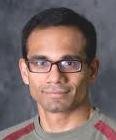
Salil Kanhere received his M.S. and Ph.D. degrees, both in Electrical Engineering from Drexel University, Philadelphia in 2001 and 2003, respectively. He is currently a Senior Lecturer at the School of Computer Science and Engineering at The University of New South Wales in Sydney, Australia. His research interests include mobile networks, vehicular communication, participatory sensing and sensor networks. He has published over 75 peer-reviewed articles on these research topics. He currently serves as the Area Editor for the ICST Journal on Ubiquitous Environments and the European Transactions on Telecommunications. He has also served on the organizing committee and program committee of a number of IEEE and ACM international conferences. He is a senior member of the IEEE and ACM.
T06: Radio Resource Management in Femtocell Network Monday, June 11, Afternoon
- Speakers:
- Ekram Hossain, University of Manitoba, Canada
Long Bao Le, University of Quebec, Canada - Abstract:
- The evolving femtocell networks are envisioned to provide improved capacity and coverage in next generation cellular wireless systems. Femtocell deployments pose many challenges among which radio resource management (i.e., interference management, admission control, load balancing) is the most significant one. The aim of this tutorial is to provide an extensive overview of the radio resource management problem in femtocell networks considering both CDMA (e.g., 3G) and OFDMA (e.g., LTE, WiMAX) femtocells, and the state-of-the-art research on this topic. After a brief overview of the femtocell networks, we outline the major challenges in successful deployment of femtocells in next generation cellular wireless systems. In particular, the challenges related to resource allocation, co-tier and cross-tier interference management and admission control, mobility and handoff management, auto-configuration, timing and synchronization, and security are discussed. Then we provide a comprehensive overview of the different state-of-the-art techniques for resource allocation and interference management in femtocell networks. In this context, the interference modeling approach based on the shot-noise theory is also discussed. We consider both CDMA and OFDMA femtocells and two different approaches for resource allocation and interference management in these systems are described. The requirements and challenges for admission control and load balancing in femtocell networks are then discussed, and an example method for joint admission control and load balancing is given.
- Speaker Bios:
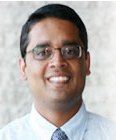
Ekram Hossain (http://www.ee.umanitoba.ca/~ekram) is currently a Full Professor in the Department of Electrical and Computer Engineering at University of Manitoba, Winnipeg, Canada. His current research interests include resource allocation and medium access control in wireless networks, cooperative and cognitive wireless systems, smart grid systems, and green radio communications. He has authored/edited several books in these areas. Currently he serves as the Editor-in-Chief for the IEEE Communications Surveys and Tutorials, an Editor for the IEEE Transactions on Mobile Computing, and the IEEE Wireless Communications. Previously he served as the “Area Editor” for the IEEE Transactions on Wireless Communications in the area of “Resource Management and Multiple Access”. Dr. Hossain presented tutorials on different emerging wireless communications technologies in IEEE conferences including IEEE Globecom'11, IEEE PIMRC'11, IEEE ICC'10, IEEE ICC'09, IEEE VTC'08-Fall, IEEE Globecom'07, and IEEE WCNC'07. Dr. Hossain is a registered Professional Engineer (P.Eng.) in the province of Manitoba, Canada.
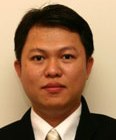
Long Bao Le (http://necphy-lab.com/) is currently with the National Institute of Scientific Research – Energy, Materials, and Telecommunications (INRS-EMT), University of Quebec, Montreal, QC, Canada, where he is an Assistant Professor. He obtained his Ph.D. from the University of Manitoba, Canada, in 2007. From 2008-2010, he was Post-Doctoral Research Associate at the Massachusetts Institute of Technology (MIT), USA. Dr. Le’s research has focused on cross-layer optimization issues for physical and higher-layer protocols in wireless networks. His current research interests include cognitive radio, cooperative diversity, network optimization and control, adaptive resource allocation and protocol engineering for wireless networks. Dr. Le serves as an editor for the IEEE Wireless Communications Letters.
T07: Inter-Vehicular Communication: Standards, Protocol Design,
and Integrated Security Metrics
Friday, June 15, Morning
- Speakers:
- Falko Dressler, University of Innsbruck, Austria
Claudio Casetti, Politecnico di Torino, Italy - Abstract:
- This tutorial covers the most recent progress in Inter-Vehicular Communication. In a first part, we investigate the requirements on IVC ranging from traffic information systems to safety applications with real-time communication constraints. Typical IVC approaches are introduced including fully distributed as well as infrastructure-based, and centralized 3G/4G solutions. Emphasis is laid on the most recent standardization activities in the DSRC/WAVE context. We continue to discuss relevant protocols and communication principles to provide detailed information on which communication methods can be applied and how IVC protocols are developed. We study ad hoc routing approaches and their limitations to cover wide areas as well as recent geo-routing and broadcast-based data dissemination techniques. The main focus, however, will be on recently developed beaconing approaches that can easily be built upon the IEEE 802.11p protocol standard. The second part of the tutorial will focus on Secure IVC. Relying on broadcast transmissions, IVC solutions are exposed to multiple threats. Attacks are not easily prevented because of the ephemeral nature of IVC links and the constant movement of vehicles, as well as by the stringent timing requirements of IVC applications. We discuss the vulnerabilities of IVC solutions in terms of identity management, message authentication/protection/consistency, privacy protection and in-vehicle security. This overview will provide attendees with the state of the art as well as the open challenges in the field of secure IVC.
- Speaker Bios:
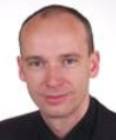
Falko Dressler is a Full Professor of Computer Science heading the Computer and Communication Systems Group at the Institute of Computer Science, University of Innsbruck. He teaches on self-organizing sensor and actor networks, network security, and communication systems. Dr. Dressler received his M.Sc. and Ph.D. degree from the Dept. of Computer Science, University of Erlangen in 1998 and 2003, respectively. Dr. Dressler is an Editor for journals such as Elsevier Ad Hoc Networks, ACM/Springer Wireless Networks (WINET), and Elsevier Nano Communication Networks. He was guest editor of special issues on self-organization, vehicular networking, and bio-inspired computing and communication for IEEE Journal on Selected Areas in Communications (JSAC), IEEE Communications Magazine, Elsevier Ad Hoc Networks, and others. Among other, Dr. Dressler wrote the textbooks Self-Organization in Sensor and Actor Networks, published by Wiley in 2007. Dr. Dressler is an IEEE Distinguished Lecturer in the fields of inter-vehicular communication, self-organization, and bio-inspired networking. Dr. Dressler is a Senior Member of the IEEE (COMSOC, CS, VTS) as well as a Senior Member of ACM (SIGMOBILE). His research activities are focused on adaptive wireless networking and self-organization methods addressing issues in wireless ad hoc and sensor networks, inter-vehicular communication systems, bio-inspired networking, and adaptive network security techniques.

Claudio Casetti got his M.Sc. degree in Electrical Engineering from Politecnico di Torino, Italy. He got his PhD in Telecommunication Engineering from the same institution and he is currently an Assistant Professor at Dipartimento di Elettronica. He has published more than 130 papers in peer-refereed international journals and conferences on the following topics: Transport and network protocols in wired networks, IEEE 802.11 WLANs, Vehicular networks, Ad hoc and sensor networks. He holds one patent from the U.S. Patent Office and two from the E.U. Patent Office. He serves in the TPC of the main international conferences in the networking field (e.g., IEEE INFOCOM, IEEE GLOBECOM or IEEE ICC). He was the Workshop Co-Chair of IEEE INFOCOM 2009, the Technical Program Co-Chair of IEEE WONS 2009 and the General Co-Chair of IEEE WONS 2010. He was Principal Investigator in the Alcatel France - Politecnico di Torino research contract on "End-to-end QoS Solutions in wireless networks" (2003-2004). He was principal investigator in the VICSUM project on vehicular networks funded by Regione Piemonte (2007-2009). He has acted as Team Leader for Politecnico di Torino in the FP6 Network of Excellence - NoE "Euro-NGI" (2003-2006), the FP6 NoE "Euro-FGI" (2006-2008) and the FP7 NoE "Euro-NF" (2008-2011). He is a member of IEEE. He has been a visiting scholar at Umass Amherst, UCLA and UCSD.
T08: New Frontiers in Opportunistic Communication Friday, June 15, Morning
- Speakers:
- Aria Nosratinia, University of Texas at Dallas, USA
- Abstract:
- Opportunistic communication is a simple but effective method of leveraging multiple fading realizations to make the best instantaneous use of wireless resources. This simple idea has found many manifestations, from multi-user diversity to antenna selection to relay selection. Moreover, recent developments hint that opportunistic methods may find a wider breadth than previously thought. This tutorial outlines the principles, tools, and applications of opportunistic communication, with special attention to potential future developments and research directions. The tutorial begins with a historical background and explores the classical multi-user diversity and its extensions. Various aspects of this problem, including limited feedback, will be discussed. Relay selection is another important instance of opportunistic communication. An outline of known results in relay selection will be presented and potential future directions will be discussed. The related area of MIMO antenna selection will be visited. Finally two advanced topics will be presented: first, new results will be presented that allow the extension of opportunistic communication and its analysis to network topologies that previously could not be analyzed under multiuser diversity, for example the broadcast relay channel. Second, the application of multiuser diversity in cognitive radio will be discussed.
- Speaker Bios:
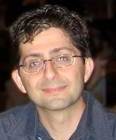
Aria Nosratinia is Jonsson Distinguished Professor of Engineering and Computer Science at the University of Texas at Dallas. He received his PhD in Electrical Engineering from the University of Illinois at Urbana-Champaign in 1996. He has held visiting positions at Princeton University, Rice University and UCLA. His interests are in the area of signal processing and communication for wireless networks. His research in the recent past has concentrated on cooperative and opportunistic wireless communications, an area in which he is widely published and cited. He is currently serving as associate editor for the IEEE Trans. Wireless Communications. He has been a past editor for the IEEE Trans. Information Theory, IEEE Transactions on Image Processing, and IEEE Signal Processing Letters. He has been on the organizing committees of several IEEE conferences. He has received the National Science Foundation Career award, as well as two chapter awards from the IEEE Signal Processing Society. He was elected IEEE Fellow “for contributions to multimedia and wireless communication.”
T09: Remote Wellbeing Monitoring in 4G Networks Friday, June 15, Morning
- Speakers:
- Abd-Elhamid M. Taha, Alfaisal University, Saudi Arabia
Najah Abu Ali, United Arab Emirates University, UAE
Hossam S. Hassanein, Queen’s University, Canada - Abstract:
- The impacts of Remote Wellbeing Monitoring (RWM) extend beyond basic lifestyle gains to reach serious humane and economic consequences. The upcoming IMT-Advanced or 4G technologies will empower RWM services with substantial improvements through the use of advances such as multi-carrier access techniques, MIMO, flat architectures, small cells and convergence to all-IP networks. 4G access also promises a “greener” mobile user experience. Deployment of RWM over 4G networks, however, is not without challenges. As a network service, RWM may have stringent constraints in terms of Quality of Service (QoS), reliability and security. The nature of RWM traffic is also mixed (delay-constrained data streams, high resolution images, videos, etc.), and require particular attention from service providers given that lives might be at stake. The tutorial starts with motivating RWM services, offering an up-to-date view of the industry and the market status. It then details the technical requirements of RWM in terms of overall system design, system components, and network considerations. A primer is then provided for IMT-Advanced networks, taking 3GPP’s LTE-Advanced as an example. We review technologies and advances enabling the realization of 4G access networks. Finally, an overview of the research challenges facing dense deployment of RWM services will be given.
- Speaker Bios:
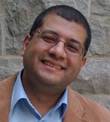
Abd-Elhamid M. Taha received his B.Sc. and M.Sc. in Electrical Engineering from Kuwait University, Kuwait in 1999 and 2002, and his Ph.D. from the Department of Electrical and Computer Engineering of Queen’s University, Canada in September 2007. He is currently an Assistant Professor at Alfaisal University in Saudi Arabia and an Adjunct Assistant Professor at the School of Computing in Queen’s University, Canada. Dr. Taha has authored several publications including journals, refereed conference papers, and book chapters. He also served as a technical program committee in several international conferences and symposia. His areas of interest include radio resource management in wireless and mobile networks, especially in the context of wireless overlays with heterogeneous access and wireless relay networks. His recent activity includes co-founding the IEEE Workshop on the Design, Modeling and Evaluation of Cyber Physical Systems (CyPhy’11). Dr. Taha has presented two tutorials before at flagship IEEE conferences including IEEE ICC 2011 and VTC 2010. He is currently a member of both the IEEE and the ACM.
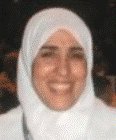
Najah Abu Ali received her B.S. and M.S. degrees in Electrical Engineering from University of Jordan, Amman, Jordan and her PhD degree in 2006 in Computer Networks in Electrical Engineering department at Queen's University, Kingston, Canada. She joined the College of Information Technology, United Arab Emirates University (Al Ain, UAE), as an Associat Professor with the Computer Networks Engineering track. She had a postdoctoral fellowship at the School of Computing, Queen's University from January 2006 to August 2006. Her research interests comprise wired and wireless communication networks. Specifically, analytical and measurement based network performance management and Quality of Service and resource management of single and multihop wireless networks. Dr. Abu Ali is an expert on Broadband Wireless Networks architecture, design, QoS provisioning and performance and has published extensively in the area. She delivered several tutorials before including one on Resource Management in WiMax Networks at ICC 2008, an overview of IEEE 802.16/WiMAX at CCNC 2009, and two on IMT-Advanced standardization and technologies, presented in Globecom 2009 and VTC-Fall 2010.
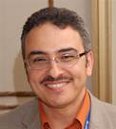
Hossam Hassanein is a leading authority in the areas of broadband, wireless and mobile networks architecture, protocols, control and performance evaluation. His record spans more than 400 publications in journals, conferences and book chapters, in addition to numerous keynotes and plenary talks in flagship venues. Dr. Hassanein has received several recognition and best papers awards at top international conferences. He is also the founder and director of the Telecommunications Research (TR) Lab at Queen's University School of Computing, with extensive international academic and industrial collaborations. Dr. Hassanein has. He is a senior member of the IEEE, and is currently chair of the IEEE Communication Society Technical Committee on Ad hoc and Sensor Networks (TC AHSN). Dr. Hassanein is an IEEE Communications Society Distinguished Speaker (Distinguished Lecturer 2008-2010).
T10: Mobile-Station and Base-Station Cooperation for Wireless Communications Friday, June 15, Afternoon
- Speakers:
- Lajos Hanzo, University of Southampton, UK
- Abstract:
- The limitations of MIMOs relying on co-located array-elements are highlighted and it is shown, how the single-antenna-aided cooperative mobiles may circumvent these limitations by forming MIMOs having distributed elements. This concept is also referred to a Virtual Antenna Arrays (VAA). Then the corresponding amplify-forward and decode-forward protocols as well as their hybrids are studied. Channel coding has to be specifically designed for the VAAs in order to prevent avalanche-like error-propagation. Hence sophisticated three-stage-concatenated iterative channel coding schemes are proposed and it is argued that in the absence of accurate channel information at the relays the best way forward might be to use multiple-symbol differential detection. Indeed, it is rather unrealistic to expect that an altrustically relaying handset would also accurately estimate the source-relay channel for the sake of high-integrity coherent detection. EXIT-chart-aided designs are used for creating near-capacity solutions and a range of future research directions as well as open problems are stated.
- Speaker Bios:
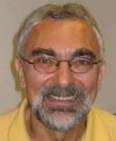
Lajos Hanzo (http://www-mobile.ecs.soton.ac.uk/) FREng, FIEEE, FIET, Fellow of EURASIP, DSc has held various research and academic posts in Hungary, Germany and the UK. He has co-authored 20 Wiley-IEEE Press books and has 1250 research contributions at IEEE Xplore. He presented recent short courses for example at: ICC'2008, Beijing, China; VTC'2008 Spring Singapore; WCNC'2008, Las Vegas; VTC'2008 Fall, Calgary, Canada; Globecom'2008, New Orleans, USA; VTC'2009 Spring, Barcelona, Spain; ICC'2009 Dresden, Germany; VTC'2009 Anchorage, USA; Globecom 2009, Hawaii, USA; NCC'2010, Chennai, India; VTC'2010 Spring, Taipei, Taiwan; ICC'2010, Capte Town, South Africa; VTC'10 Fall Ottawa; ICC 2011 Kyoto, Japan; WCNC 2011 Cancun, Mexico; VTC 2011 Fall San Francisco, USA; Globecom'11 Houston, USA.
T11: Disruption/Delay Tolerant Mobile l Ad Hoc Networks Friday, June 15, Afternoon
- Speakers:
- Zhensheng Zhang, Boeing, USA
- Abstract:
- In mobile ad hoc networks, nodes are constantly in motion and/or operate on limited power. When nodes are in motion, links can be obstructed by intervening objects. To conserve power, links are shut down periodically, resulting in intermittent connectivity. Applications in intermittent connected networks must tolerate delays beyond conventional IP forwarding delays and these networks are referred to as delay/disruption tolerant networks (DTN). New protocols specifically for DTNs must be developed as existing protocols designed for the Internet do not work properly. In this tutorial, we will review different DTN architectures and different protocol stacks proposed, the Bundle Protocol (BP), the Convergence Layer (CL) protocols such as Licklider transmission protocol (LTP)-CL, TCP-CL and UDP-CL. We will also review the state of the art in routing in DTNs and categorize these routing protocols based on information used. Recent developments in erasure coding, network coding and social networks applied to DTNs are also described. New architectures for vehicular DTNs are presented. Applications of DTNs in machine to machine and off loading traffic from cellular networks are discussed. The tutorial also identifies open research issues and intends to motivate new research and development in this area.
- Speaker Bios:
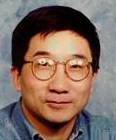
Zhensheng Zhang received his Ph.D. in electrical engineering from UCLA. Dr. Zhang has over twenty years experience in design and analysis of network architecture, protocols and control algorithms in wireless networks. He is currently with Boeing (formerly SDRC), Principal Engineer, serving as Principal Investigator for several DOD projects. Before joining SDRC, he visited Microsoft Research in the summer of 2002 and worked at Sorrento Networks, Department of System Architecture, for 2 years, responsible for designing the next-generation optical metro networks using the GMPLS control framework. Prior to Sorrento Networks he was with Bell Laboratories, Lucent Technologies, focusing on research and development in wireless networks. Dr. Zhang severed as Editor of IEEE Transaction on Wireless Communications from 2002 to 2006, as the General Chair of Broadband Wireless Networking Symposium, October 2004. He also served as Guest Editor for the IEEE JSAC special issue on Overlay Networks, 2003 and the Journal of Wireless Networks issue on multimedia wireless networks, August 1996. His research interests include wireless ad hoc networks, wireless sensor networks. He has given many invited talks and tutorials on wireless ad hoc networks at various conferences. Dr. Zhang will serve as the IEEE Globecom2012 TPC Chair.
T12: Network Coding: From Theory to Practice Friday, June 15, Afternoon
- Speakers:
- Frank H. P. Fitzek, University of Aalborg, Denmark
Muriel Médard, Massachusetts Institute of Technology, USA - Abstract:
- The tutorial provides an introduction to the rapidly growing research area of network coding. Network coding allows intermediate nodes in a network to manipulate data, for example by sending out packets that are combinations of previously received packets instead of simply forwarding them. The initial theoretical results on network coding were followed by a wealth of applications in a number of different areas that show that the theoretical insights can be translated into practical gains. The tutorial is divided into three parts. The first part provides the participants with the theoretical tools necessary to understand the field of network coding and focuses on the underlying algebraic principles. It will also introduce distributed randomized network codes and discuss their properties. We will not assume any prior knowledge of advanced algebra or optimization. The second part of the tutorial gives an overview of the different application areas and discusses, which types of networking problems are amenable to network coding (and which aren't). Finally, we will discuss implementation aspects in real-world systems. Such systems may range from core network routers all the way down to mobile phones and tiny sensor nodes.
- Speaker Bios:
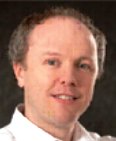
Frank H. P. Fitzek is a Professor in the department of Electronic Systems, University of Aalborg, Denmark heading the Mobile Device group. He received his diploma (Dipl.-Ing.) degree in electrical engineering from the University of Technology - Rheinisch-Westfälische Technische Hochschule (RWTH) - Aachen, Germany, in 1997 and his Ph.D. (Dr.-Ing.) in Electrical Engineering from the Technical University Berlin, Germany in 2002 and became Adjunct Professor at the University of Ferrara, Italy. He co-founded the start-up company acticom GmbH in Berlin in 1999. He has visited various research institutes including Massachusetts Institute of Technology (MIT), VTT, and Arizona State University. In 2005 he won the YRP award for the work on MIMO MDC and received the Young Elite Researcher Award of Denmark. He was selected to receive the NOKIA Champion Award four times in a row in 2007 to 2010. In 2008 he was awarded the Nokia Achievement Award for his work on cooperative networks. His current research interests are in the areas of wireless and mobile communication networks, mobile phone programming, cross layer as well as energy efficient protocol design and cooperative networking.
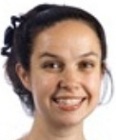
Muriel Médard is a Professor in the Electrical Engineering and Computer Science at MIT. Professor Médard received B.S. degrees in EECS and in Mathematics in 1989, a B.S. degree in Humanities in 1990, a M.S. degree in EE 1991, and a Sc D. degree in EE in 1995, all from the Massachusetts Institute of Technology (MIT), Cambridge. She serves as an associate editor for the IEEE/OSA Journal of Lightwave Technology and is a member of the Board of Governors of the IEEE Information Theory Society. Professor Médard's research interests are in the areas of network coding and reliable communications, particularly for optical and wireless networks. She was awarded the IEEE Leon K. Kirchmayer Prize Paper Award 2002 for her paper, "The Effect Upon Channel Capacity in Wireless Communications of Perfect and Imperfect Knowledge of the Channel. She was co- awarded the Best Paper Award for G. Weichenberg, V. Chan, M. Médard, "Reliable Architectures for Networks Under Stress”. She received a NSF Career Award in 2001 and was co-winner 2004 Harold E. Edgerton Faculty Achievement Award, established in 1982 to honor junior faculty members "for distinction in research, teaching and service to the MIT community." She was named a 2007 Gilbreth Lecturer by the National Academy of Engineering. Professor Médard is a House Master at Next House and a Fellow of IEEE.



